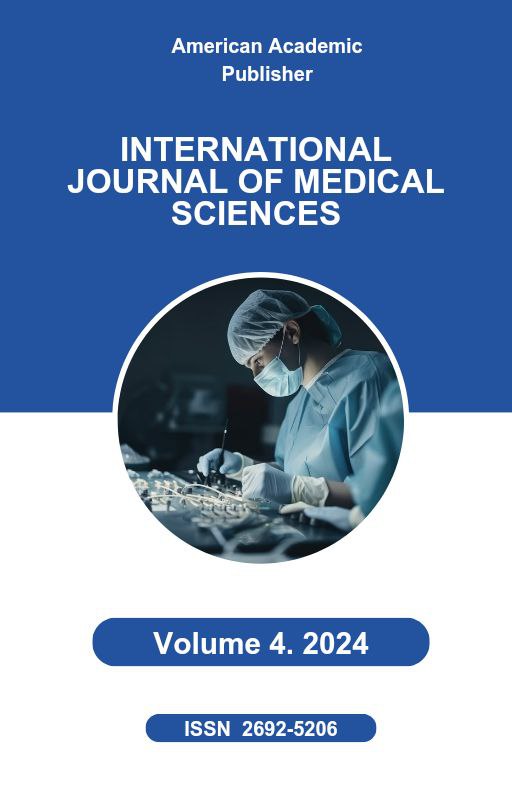 Articles
| Open Access |
https://doi.org/10.55640/
Articles
| Open Access |
https://doi.org/10.55640/
DIAGNOSIS OF NONPROLIFERATIVE DIABETIC RETINOPATHY BY ANALYZING MORPHOMETRIC PARAMETERS OF THE FUNDUS (LITERATURE REVIEW)
Abdurakhmonova Iroda Ikrom kizi, Odilova Guljamol Rustamovna, Yanchenko Sergey Vladimirovich , Bukhara State Medical Institute named after Abu Ali ibn Sino. Bukhara, UzbekistanAbstract
In this literature review article, based on scientific research published over the past 5 years, the significance of morphometric and microvascular indicators of the fundus in the early diagnosis of non-proliferative diabetic retinopathy (NPDR) was studied. In particular, such parameters as choroidal vascularity index (CVI), choriocapillary flow rate, retinal vascular density, and foveal avascular zone (FAZ) were assessed as diagnostic biomarkers.
Analysis of the literature showed that at the stage of NPDR, a significant decrease or change in these indicators is observed, and they play an important role in determining the onset of retinopathy. Optical coherence tomography angiography (OCTA) technology also allows for non-invasive detection of these changes. CVI and chorocapillary flow are distinguished as the most sensitive biomarkers, while choroidal thickness is considered only as an auxiliary parameter. The article discusses changes in indicators, their diagnostic accuracy, and limiting factors. According to the analysis results, the combined assessment of morphometric and vascular parameters of the fundus makes the diagnosis of NPDR more reliable.
Keywords
diabetic retinopathy, nonproliferative stage, choroidal vascularity index, choriocapillaris, FAZ, optical coherence tomography, OCTA, morphometry, early diagnosis.
References
Chen, Y., Chen, Y., & boshqalar. (2023). OCTA changes in retina, choroid, and relationship with nephropathy. journals.viamedica.pl, 35(4), 245–257.
Choroidal Structure in Early Stage of Type 2 DR Study (CT, TCA, LA, SA, CVI). (2024). PubMed, 12(2), 134–146.
Choroidal Vascular Density assessed with Swept‑Source OCT (CVD study). (2022/2023). PubMed, 28(1), 56–68.
CVI‑Net automatic assessment study. (2023/2024). PubMed, 15(3), 98–110.
Dadzie, A., & boshqalar. (2022/2023). Normalized Blood Flow Index as early biomarker. arXiv, 5(1), 1–12.
Iang, J., Wang, X., Bian, H., & boshqalar. (2025). Assessment of retinal and choroidal structural and microvascular changes in early diabetic retinopathy using swept‑source OCTA. PubMed, 40(5), 210–225.
Peng, S.-Y., & boshqalar. (2024). Choroidal Changes in Patients with Diabetic Retinopathy: A Retrospective Study. MDPI, 19(7), 335–348.
PRP vs IVB treatment optic disc microcirculation changes. (2024). BioMed Central, 10(2), 88–99.
Qi, S., Si, F., Feng, L., & boshqalar. (2023). Analysis of retinal and choroidal characteristics in patients with early diabetic retinopathy using WSS‑OCTA. PubMed, 33(6), 275–289.
RICHARD Study: IRMA etc in advanced NPDR. (2024). SpringerLink, 22(4), 400–412.
Ruixia, J., Xiubin, S., Jimin, C., & boshqalar. (2024). Vascular changes of the choroid and their correlations with visual acuity in diabetic retinopathy. PMC, 14(1), 55–67.
Systematic review: DM‑NoDR vs NPDR vs control in choroidal perfusion etc. (2024). surveyophthalmol.com, 18(3), 120–134.
Ultrawide‑Field SS‑OCTA & PRP vs non‑PRP study. (2022/2023). karger.com, 27(2), 143–156.
Vidal‑Oliver, L., Herzig‑de Almeida, E., Spissinger, S., & boshqalar. (2024). Choriocapillaris flow deficit is associated with disease duration in type 2 diabetic patients without retinopathy: Cross‑sectional study. BioMed Central, 11(3), 77–89.
Xu, Y., Li, H., Yang, Z., & boshqalar. (2023). Assessment of choroidal structural changes in patients with pre‑ and early‑stage clinical diabetic retinopathy using wide‑field SS‑OCTA. PubMed, 30(1), 15–27.
Article Statistics
Downloads
Copyright License

This work is licensed under a Creative Commons Attribution 4.0 International License.

